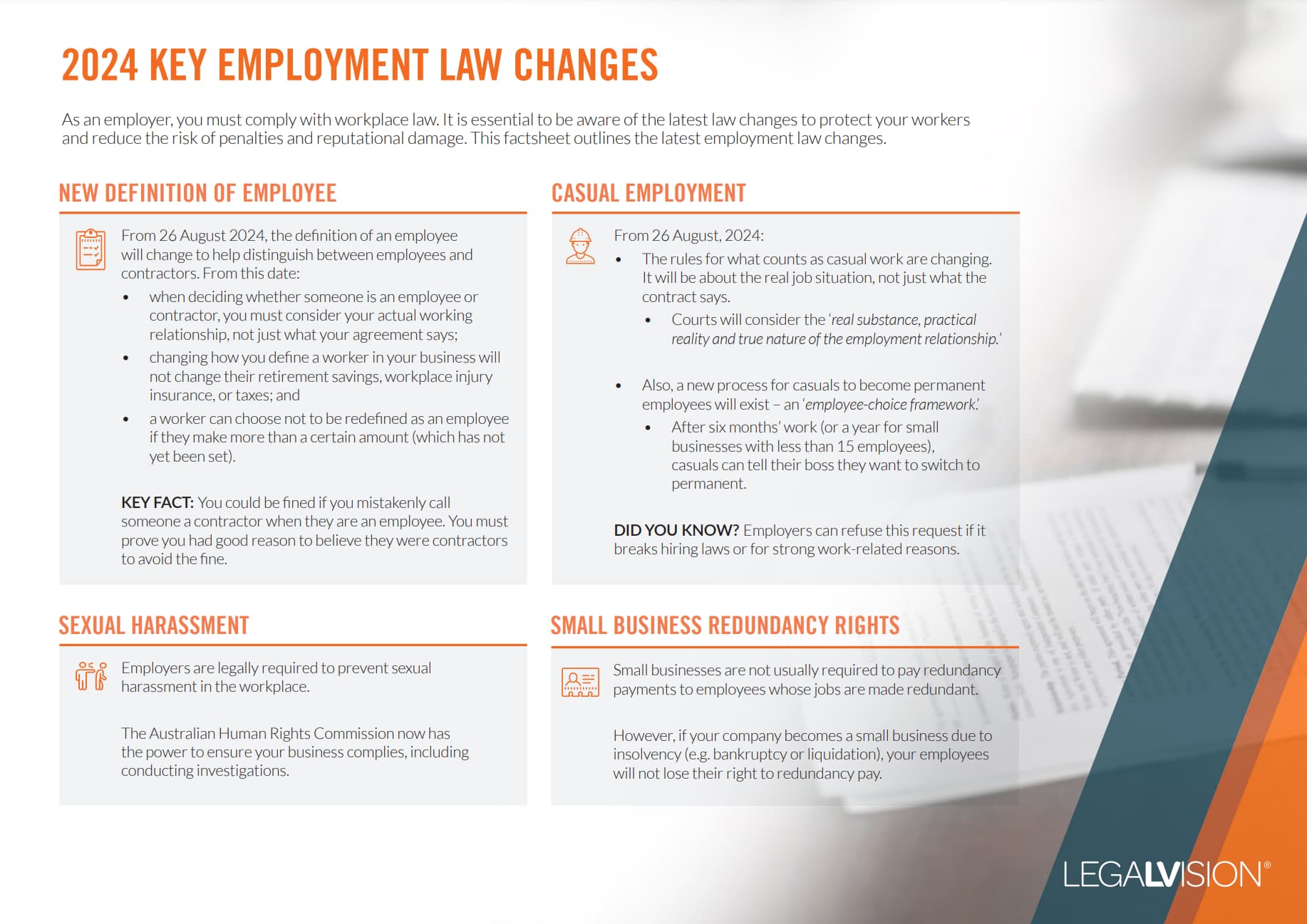When one of your employees complains about another, you might find it tricky to figure out what steps to take. One method for handling these complaints is through a workplace investigation. This is a formal process for understanding, documenting, and evaluating situations involving:
- bullying;
- harassment; or
- discrimination.
Deciding when to start an investigation can be challenging, as each case varies. This article will guide you through starting a workplace investigation for employee bullying or harassment and what steps to take afterwards.
Discrimination, Bullying and Harassment in the Workplace
Before you address any allegations of employee discrimination, bullying, or harassment, you need to understand what each of these terms means.
In the workplace, bullying occurs when an employee or group of employees repeatedly behave unreasonably toward another employee. Bullying can be direct or indirect.
Discrimination means mistreating an employee because of a specific characteristic, like race, gender, age, or religion. It is like bullying but can happen directly or indirectly.
Harassment, a type of discrimination, covers sexual harassment. This includes unwanted sexual advances, requests for sexual favours, or any other unwelcome sexual behaviour that makes someone feel offended, humiliated, or intimidated. In such situations, a reasonable person would expect that reaction.
Even if you do not believe the accusations or an employee’s behaviour rises to the level of bullying, discrimination, or harassment, it is crucial that you objectively assess the situation and take the necessary steps. This is vital because, as an employer, it is your responsibility to safeguard your workers’ health and safety. Ensuring a safe workplace means protecting employees from:
- discrimination,
- bullying and
- harassment.
If you do not address these issues in the workplace, you might breach your work, health, and safety obligations as an employer, and your employees can file a claim with the Fair Work Commission or lodge a complaint with the local WHS regulator against you.
You and your fellow managers should avoid engaging in illegal behaviour under the Fair Work Act. However, if any such behaviour occurs or if an employee makes an allegation, you should take appropriate action.
Benefits of a Workplace Investigation
As an employer, you must protect your employees from unlawful behaviour in the workplace. If you do not, you could be legally responsible for any mental or emotional damage the employee suffers.
If an employee complains about bullying, harassment, or discrimination and you do not investigate, you might face severe consequences from the Fair Work Commission or Human Rights Commission.
Conducting a formal workplace investigation allows you to document the complaint and determine its validity thoroughly. Additionally, an effective workplace investigation provides recommendations to prevent similar issues in the future and promotes harmony among the team.
Therefore, when there are any reported incidents of unlawful behaviour, you need to:
- act promptly;
- treat all matters seriously;
- ensure you keep matters confidential;
- be fair and neutral when handling complaints; and
- be clear and transparent about the process and the outcomes.
It is crucial to take action to maintain a positive workplace culture and a reputation that does not ignore justified reports. Steps you can take in response to a claim of workplace bullying, discrimination, or harassment include:
- providing information to workers to raise awareness of bullying and the expected behaviour;
- offering training or coaching;
- providing counselling;
- requesting an apology from the perpetrator;
- giving a verbal or written warning to the perpetrator; or
- taking disciplinary action up to and including dismissal.
Establishing the Right Policies
Every business needs an anti-discrimination policy and a bullying and harassment policy. If your company does not have them yet, you should create and enforce them promptly.
Failing to establish these policies could present issues for your business in the event of a FairWork claim.
Policies show that your business has taken steps to prevent bullying, discrimination, or harassment. But just making a policy is not sufficient. You need to ensure everyone understands, follows, and enforces it. Training staff on policy content is crucial, too. Your guidelines for managers should outline workplace complaint processes and investigation procedures.
When to Engage an External Investigator
Hiring an external investigator to conduct workplace investigations can decrease the risk of employees claiming bias. Additionally, by serving as an impartial third party, an external investigator ensures adherence to proper legal procedures.
You should engage an external investigator where:
- an employee makes a complaint against a senior employee;
- the subject of the claim is serious; or
- your HR department is unfamiliar with the investigation processes.
An external investigator will undergo the process of:
- deciding if an investigation is necessary;
- interviewing employees, any people involved and witnesses;
- gathering additional material such as file notes and emails;
- reviewing the evidence and statements;
- providing parties involved with the opportunity to comment on evidence that is contradictory to their version of events; and
- compiling an investigation summary into a formal report for the employer.
What is the Content of the Formal Report?
A formal investigation report will typically:
- list the relevant facts at issue;
- balance those facts with evidence and law; and
- assess whether the events are proven, not proven, or inconclusive.
- If the situation involves managerial decision-making, the report will also detail whether that decision-making was reasonable or unreasonable.
The report will typically end with recommendations for the employer, including:
- whether you should take disciplinary action;
- suggestions for further training; and
- development of additional workplace policies.

As an employer, it is essential to understand what employment laws have changed and their implications for your business — particularly the changes to the Fair Work Act 2009 through the new Closing the Loopholes legislation.
Key Takeaways
If an employee accuses someone of discrimination, bullying, or harassment, you need to conduct a formal investigation. This investigation should carefully examine the claim and suggest what steps to take next. It is important because it helps protect your organisation from future risks.
If you need assistance in creating workplace policies or conducting a workplace investigation, our experienced employment lawyers can assist as part of our LegalVision membership. For a low monthly fee, you will have unlimited access to lawyers to answer your questions and draft and review your documents. Call us today on 1300 544 755 or visit our membership page.
We appreciate your feedback – your submission has been successfully received.











